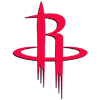This edition of the Job Battles series will be a first part in however many parts it takes to get through the running backs.
The competitions are listed alphabetically for team location, and the players are listed in order of years in the NFL. A general verdict is issued at the end of each blurb.
Zack Moss vs. Chase Brown, CIN
Moss was always underrated in Buffalo, but it's interesting to see how much and how quickly perceptions around him have changed, mostly on the basis of one 2023 game (Week 5 against Tennessee). The fantasy media consensus earlier that offesason said Moss would back up Evan Hull in 2023, or maybe miss the Colts roster entirely. Now, however, the general assumption is that Moss is relatively unchallenged as the starter in Cincinnati.
Moss' numbers in Indianapolis were mostly the same as they were in Buffalo, especially outside of that Titans game. Any change in Moss pertained to his usage volume rather than any change in his general effect. The contract Moss signed with Cincinnati will either be a two-year, $8 million deal or a one-year, $4.5 million deal. Neither is a substantial cost or commitment.
Even aside from questions about Moss' abilities or Cincinnati's true commitment level to him, an arguably bigger obstacle to Moss emerging as a viable starter is his injury history. Moss came out of Utah in 2020 with a sketchy knee, and though it mercifully has stayed quiet since then Moss still missed
This edition of the Job Battles series will be a first part in however many parts it takes to get through the running backs.
The competitions are listed alphabetically for team location, and the players are listed in order of years in the NFL. A general verdict is issued at the end of each blurb.
Zack Moss vs. Chase Brown, CIN
Moss was always underrated in Buffalo, but it's interesting to see how much and how quickly perceptions around him have changed, mostly on the basis of one 2023 game (Week 5 against Tennessee). The fantasy media consensus earlier that offesason said Moss would back up Evan Hull in 2023, or maybe miss the Colts roster entirely. Now, however, the general assumption is that Moss is relatively unchallenged as the starter in Cincinnati.
Moss' numbers in Indianapolis were mostly the same as they were in Buffalo, especially outside of that Titans game. Any change in Moss pertained to his usage volume rather than any change in his general effect. The contract Moss signed with Cincinnati will either be a two-year, $8 million deal or a one-year, $4.5 million deal. Neither is a substantial cost or commitment.
Even aside from questions about Moss' abilities or Cincinnati's true commitment level to him, an arguably bigger obstacle to Moss emerging as a viable starter is his injury history. Moss came out of Utah in 2020 with a sketchy knee, and though it mercifully has stayed quiet since then Moss still missed time in each of his four NFL seasons due to other various injuries. He even pulled a hamstring during his 40-yard dash at the combine.
Moss is a rugged runner with a natural lean close to the ideal for a running back, setting his anchor well to withstand tackle attempts while falling forward. Despite his lack of speed (~4.65-second 40), Moss is surprisingly elusive at times because he can start/stop and change direction quickly, and he has good hands as a receiver. Moss' limitation from scrimmage is that he lacks the speed to maintain any initial distance that he might create with his elusiveness. He can create big plays, but not consistently. To provide substantial fantasy value Moss likely requires volume.
Moss likely requires standout volume to stand out as anything more than a flex play. It's possible that the Bengals are committed to giving Moss that volume, but if so history says he'll be unable to withstand it over the course of the year. Be it because Moss got injured from overwork or because the Bengals specifically want to avoid overworking Moss, it is a near certainty that the Bengals will need to rely on Brown to some significant extent in the 2024 season.
Moss is currently listed at 215 pounds on his NFL.com player page, with Brown at a trivially lighter 211 pounds. What's less trivial is the athletic distinction between the two. Whereas Moss logged something like a 4.65-second 40 at 223 pounds with a 33-inch vertical, Brown ran a 4.43-second 40 at 209 pounds with a 40-inch vertical and 127-inch broad jump. Even if Moss is running something more like a 4.58-second 40 at his new weight of 215, Brown is running no worse than a 4.45 at roughly the same weight.
While it doesn't speak to pass-blocking work – something the Bengals clearly slow-rolled with Brown in 2023 – the overall from-scrimmage threat posed by Brown is at least equal to that of Moss. Brown is only trivially lighter and much more of a big-play threat than Moss, including as a receiver.
Verdict: Moss will get the starter designation, but it could quickly prove ceremonial in an eventual workload split. Brown is too good to keep on the bench in general, and Moss won't be able to match Brown's explosiveness. If not by voluntary design, then durability limitations with Moss will likely force Brown onto the field at some point.
Miles Sanders vs. Chuba Hubbard vs. Jonathon Brooks, CAR
Despite his seniority and his status as one of the league's highest-paid running backs, it appears all but safe to cross off Sanders at this point. It's almost bewildering how Sanders disappeared so quickly, and at only age 26. Sanders got absolutely nothing going in 2023, no matter how the Panthers tinkered with his role. At the very least it seems safe to say in hindsight that Sanders is a poor fit for any offense that involves tough sledding. Going from the Easy Mode offense in Philadelphia to the doomed Panthers offense seemed to wipe out whatever Sanders had going for him.
Hubbard didn't exactly set the league on fire in comparison, but he was a clear upgrade over Sanders in 2023, even though the Panthers had every reason to pretend Sanders was better. Hubbard opened the year as the passing-down back for Carolina, but by October it was clear Hubbard was also the better pure runner of the two. For Hubbard to average 3.9 yards per carry over 238 carries to Sanders' 3.3 yards per carry over 129 carries is an emphatic victory for Hubbard.
Is there a risk to Hubbard that the Panthers go back to Sanders despite last year's failures? Perhaps, but it sure seems unlikely. The Dave Canales coaching staff never asked for Sanders and they know he'll be gone by 2025 at the latest. There is no political incentive for the Panthers to overlook the fact that Hubbard is clearly better than Sanders from the coaching staff, and by now it's not clear what reason David Tepper would have to intervene when he's more so invested in Brooks and even Hubbard by now.
Indeed, Brooks is likely the real question for Hubbard's 2024 prospects. There's a certain inevitability about a second-round pick running back, especially when you're a former fourth-round pick on the last year of your rookie contract like Hubbard is. Something inevitable is not the same as something imminent, however, especially with Brooks returning from a Nov. 11 ACL tear.
If Sanders is toast then the Panthers have reason to imagine their 2024 backfield as Hubbard being the primary power runner and Brooks being the primary passing-down back. Though capable, Hubbard is not as threatening of a receiver as Brooks is. It's easy to imagine Canales eventually turning Brooks into a 60-catch running back like Rachaad White was in 2023, but it would be easier to imagine without the ACL recovery in the meantime.
Verdict: Brooks takes over the Panthers backfield in 2025, but maybe not before Hubbard leaves in free agency. A loose 2024 split where Hubbard focuses on rushing (especially power running) while Brooks eases in as a pass-catching back makes sense for multiple reasons.
J. Williams vs. S. Perine vs. McLaughlin vs. Estime, DEN
Sean Payton might have called a lot of pass-happy offenses with Drew Brees, but that was just Payton making the most of his weapons at the time. Payton understands that lesser quarterbacks don't warrant the autonomy that Brees had, and Payton similarly understands that if you want to hide a lesser quarterback then the run game is your only means of doing so. This is only to say that Payton plans to run the Broncos a lot in 2024, even if Bo Nix turns out to be some version of promising.
Any coach that understands the need for running and appreciates the details that create successful rushing production will also understand the need for volume capacity between the tackles. You create the cover for the quarterback by forcing the defense to deploy its resources toward the point of attack, where the run game is litigated. You force the defense to deploy its resources in that region by demonstrating your willingness and ability to carry out the threat of targeting that region, repeatedly if necessary. If the defense doesn't respect the point of attack, you hammer it until they do. It really is that simple.
I mention this all to clarify that, while a lot of fantasy football media assume the Broncos have an overstocked backfield between Javonte Williams, Sameje Perine, Jaleel McLaughlin and Audric Estime, Payton doesn't necessarily share the belief. At the very least there's no reason to believe the trivial fifth-round pick expense of Estime holds any bearing at all on the status of Williams or even Perine. Payton is more likely to believe that he might need all four players, both in general and especially because Nix will need more shelter this season than in upcoming years.
Despite Williams' status as a former coveted second-round pick and Perine's extremely efficient 2023 season, most of the media hype surrounding the Denver backfield at the moment pertains solely to McLaughlin. McLaughlin is definitely a productive player on a per-snap basis, but the idea of him emerging as Denver's top running back is a fantasy. It won't happen unless the Broncos split their workload three equal ways between McLaughlin and two other players, or unless Estime forces his way to multiple games of 20-plus snaps while Williams and Perine are both healthy. A scenario where McLaughlin repeatedly plays 30-plus snaps per week is highly unlikely, and if it were to somehow occur McLaughlin likely wouldn't be able to hold up against the physical burden.
McLaughlin is listed at 187 pounds at the moment, meaning he likely has hard volume limitations. Even if McLaughlin stays healthy all year he'll likely need help from at least one other running back shielding him from hits to do so. Unlike someone like De'Von Achane or Keaton Mitchell, meanwhile, McLaughlin lacks the clear homerun speed to make up for his volume limitations. McLaughlin logged a 4.46-second pro day 40, which would probably be more like a 4.50-to-4.52 if ran at the combine. Achane ran a 4.32-second 40 at the combine even at less than 100 percent, and Mitchell probably plays a bit faster than his 4.37-second 40 would lead anyone to think, too. McLaughlin is somewhat fast but more so quick and explosive. If you simply force someone as light as McLaughlin onto the field for more than 20 or so snaps in a game then you'll risk diminishing both his efficiency and his availability. It's easier to play out of the bullpen than it is to carry the bulk of an offense. Williams and Perine are necessary to spare McLaughlin from the circumstances that would undermine him. The thankless halfback dives on 3rd and 2 are carries that suit Williams and Perine but not McLaughlin.
Williams is the Broncos running back who offers the best combination of volume potential and explosiveness. This is obvious. Perine is a rock who brings stability and he can certainly withstand volume, but can't match Williams' explosiveness. McLaughlin can exceed the explosiveness of either, but he can only go one or two innings. The way you get to nine innings is by using at least two of the three.
Verdict: Javonte Williams is the starter, and Samaje Perine is the backup for base functions. McLaughlin will play between 15-to-25 snaps per game as a gadget type specializing on draws, tosses, counters and screens. Estime and his 4.7 speed are likely a healthy scratch. If Williams or Perine is traded it's because some team paid up, not because the Broncos looked for a reason to get rid of them.









































